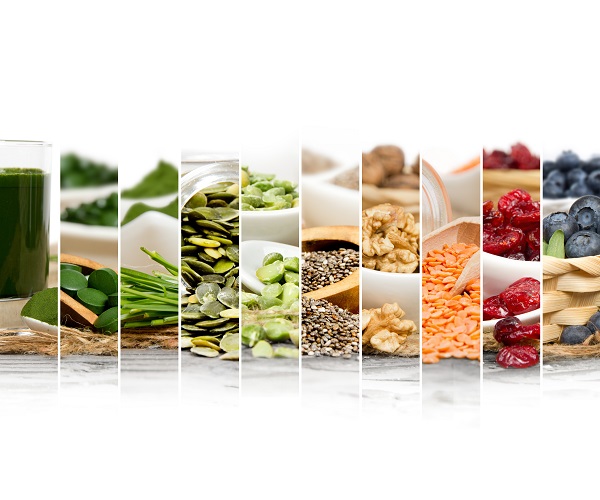Food Excipients: What You Should Know & Why They Matter
Curious about what goes into your favorite food products or your vitamin tablet? Wondering how they achieve that perfect texture, flavor, and appearance? The answer lies in food excipients – substances added to food products to enhance their physical and chemical properties.
Food excipients can include preservatives, flavor enhancers, and nutrients, and are used to improve the flavor, texture, appearance, or nutritional value of food products. In this article, we'll take a closer look at the common food excipients used in the food industry, their functions, and the regulations and safety concerns associated with them.
Whether you're a food industry professional or just curious about what goes into your favorite foods, read on to discover the fascinating world of food excipients.
Types of Food Excipients
Food excipients can be classified into two main categories: direct and indirect food additives. Let's explore the differences between these two types of food excipients
food excipients
Direct Food Additives
Direct food additives are substances that are intentionally added to food during processing, packaging, or storage to improve its safety, flavor, texture, appearance, or nutritional value. These additives undergo rigorous safety evaluations before they are approved for use, and their quantities are strictly regulated.
Examples of direct food additives include:
- Preservatives
- Antioxidants
- Flavor enhancers
- Nutrients such as vitamins and minerals
Indirect Food Additives
Indirect food additives, on the other hand, are not intentionally added to food but can come into contact with food during processing, packaging, or storage. These substances can include materials such as adhesives, lubricants, and coatings used on food processing equipment, as well as substances that migrate from packaging materials into food.
Indirect food additives are subject to the same safety evaluations as direct food additives, and their use is also regulated.
Common Food Excipients
Food excipients come in many different forms and can serve a variety of functions. Here are some common examples of food excipients:
- Starches and modified starches: Commonly used as thickening agents in food products. Modified starches are derived from natural starches and modified to improve their functional properties, such as stability and texture.
- Cellulose and cellulose derivatives: Plant-based fiber that is commonly used as a bulking agent and stabilizer in food products. Cellulose derivatives, such as carboxymethyl cellulose (CMC) and hypromellose (HPMC) are modified versions of cellulose that are used as emulsifiers and thickeners.
- Hydrocolloids: Absorb and hold water, making them useful as thickening agents and stabilizers in food products. Examples of hydrocolloids include carrageenan, xanthan gum, and agar.
- Emulsifiers: Help to mix two immiscible substances, such as oil and water. They are commonly used in processed foods to improve texture and stability.
- Anticaking agents: Prevent powders and granular substances from clumping together. They are commonly used in foods such as salt, sugar, and powdered spices. Examples of anticaking agents include silicon dioxide and magnesium carbonate.
- Sweeteners: Enhance the sweetness of food products. They can be either natural or artificial, and examples include sugar, high-fructose corn syrup, and aspartame.
- Colorants: Pigments that add color to food products. They can be either natural or artificial, and examples include beet juice, turmeric, and synthetic food dyes.
Functions of Food Excipients
Food excipients serve many important functions in the food industry. Here are some of the keyways in which food excipients are used:
- Texture and mouthfeel: Used to improve the texture and mouthfeel of food products.
- Stability and shelf life: Help to improve the stability and shelf life of food products. For example, antioxidants can be used to prevent the oxidation of fats and oils, while preservatives can be used to prevent the growth of microorganisms that can spoil food products.
- Flavor and aroma: Food excipients can be used to enhance the flavor and aroma of food products.
- Nutritional value: Vitamins and minerals can be added to food products to help address nutritional deficiencies in certain populations.
Understanding the different functions of food excipients is important for developing food products that meet specific nutritional and sensory requirements.
Food Excipients Regulations and Safety
The use of food excipients is heavily regulated to ensure the safety and quality of food products. Before a food excipient can be used in a food product, it must undergo a rigorous safety evaluation process to determine its potential health risks and benefits.
In the United States, for example, the U.S. Food and Drug Administration evaluates food excipients based on a variety of factors, including their intended use, the amount to be used, and the potential for harmful effects on human health. Food excipients that are deemed safe for use are assigned a maximum usage level, which specifies the maximum amount of the substance that can be used in a particular food product and are designated GRAS affirmed status (generally recognized as safe).
Despite these safety evaluations and regulations, there are still concerns about the potential risks associated with some food excipients. For example, some studies have suggested that certain food additives, such as artificial sweeteners, may be associated with negative health effects. However, the overall scientific consensus is that food excipients are safe when used within the recommended guidelines.
Food Excipients and the Importance of Working With an Experienced Excipients Manufacturer
Food and confectionery excipients are both vital to the food industry and highly regulated, so it’s important for companies to work with experienced excipients manufacturer. Colorcon has decades of experience with both pharmaceutical and food excipients. We’re excipient experts and have worked with some of the top brands in the world to take care of their food excipient needs.
If you’re looking for excipient experts who can help you with your products, learn more about our best-in-class technical services laboratory at our global headquarters in Harleysville, PA, USA . Or, contact us to set up a consultation so we can discuss your needs.
